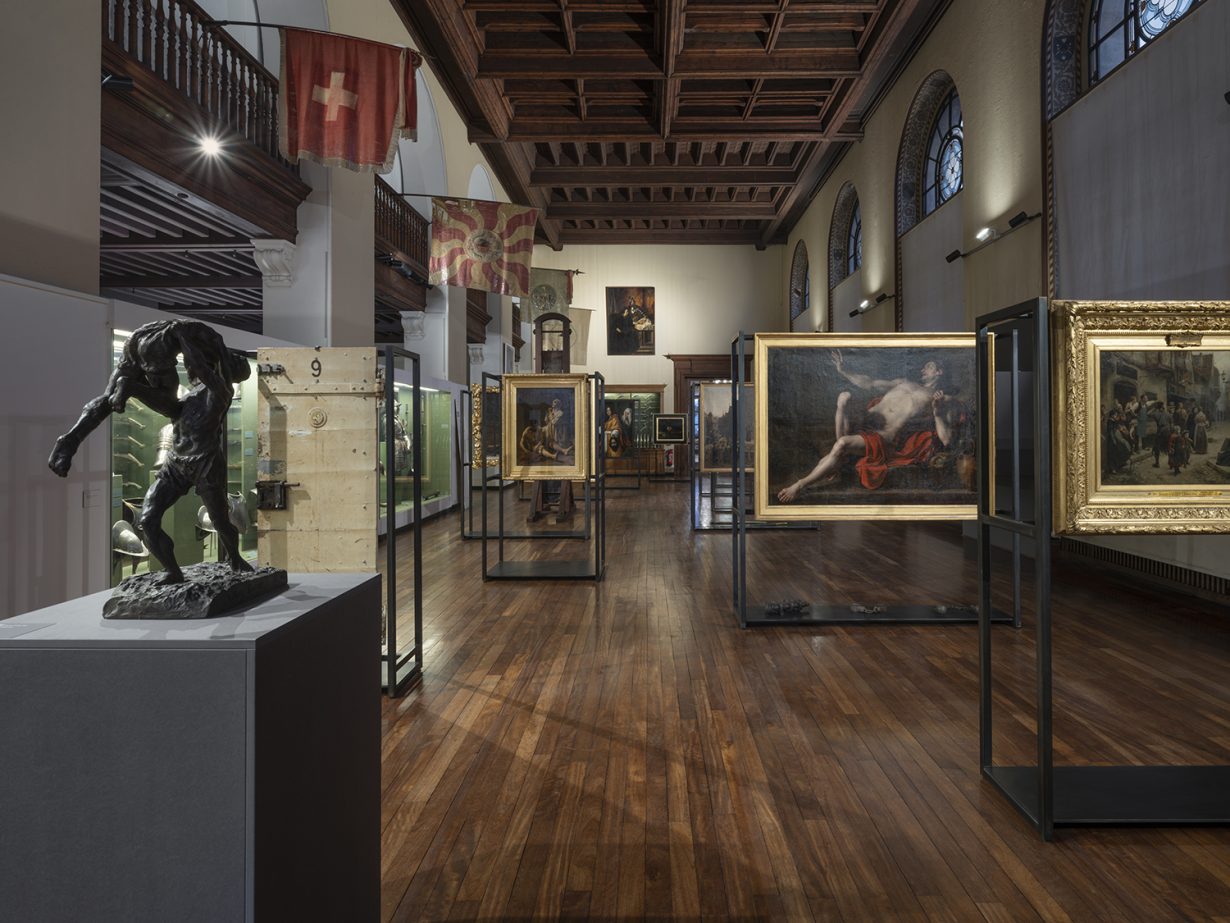Pas Besoin d’un Dessin at Geneva’s Museé d’Art et d’Histoire gives curator Jean-Hubert Martin carte blanche to select and present from over 500,000 works and objects of fine art, decorative art, textiles, jewellery and antique weaponry

The museum collection is now, more often than not, seen as something to overhaul, to correct the supposed failings and iniquities of its founding Western, Eurocentric, Enlightenment assumptions. Debates rage over demands to ‘decolonise’ collections assembled during the West’s colonial history, while art-historical collections are regularly the subject of reinterpretation by, for example, contemporary feminist and queer perspectives. Museum collections today are there to be remixed, invariably to politicised, didactic ends.
Though it avoids directly addressing such tensions, Jean-Hubert Martin’s remarkable ‘remixing’ of the collection of Geneva’s Museé d’Art et d’Histoire is a sort of provocation to those who want to impose their own critical reinterpretations on historical collections. Pas Besoin d’un Dessin (Draw Your Own Conclusion is the English rendering) is the result of Martin’s ‘carte blanche’ invitation by the museum’s recently appointed director, Marc-Olivier Wahler (onetime director of Palais de Tokyo), to select and present from the museum’s rangy and uneven historical collections of over 500,000 works and objects of fine art, decorative art, textiles, jewellery and antique weaponry.
Martin is no amateur when it comes to bold curatorial intervention: his controversial 1989 exhibition Magiciens de la Terre (at the Centre Pompidou) was a key moment in how Western curatorship would turn against the older Western-centric narrative of modern art, putting Western artists side-by-side with contemporaries from the Global South and East. Even in 1989 this was a shock to a museum culture still clinging to the idea of non-Western art as either peripheral
or only ‘traditional’.

Three decades later, Martin brings a similarly playful, mischievous approach to the taxonomical and pedagogical conventions of the historical collection. Rather than respect departmental or chronological niceties, Draw Your Own Conclusion groups rooms of works from across genres, periods and places, according to their visual and thematic affinities. The imposing first room, for example, brings together things that range ‘From the Cross to the Globe’, forms freighted with millennia of symbolism: a fearsomely long European medieval broadsword stands on its tip in front of the right-angled limbs of a Kanaga tribal facemask, itself next to a Suprematist Cross woodcut (1923) by Kazimir Malevich, before the selection segues into things that echo the circle and the sphere – eighteenth-century globes and astronomical clocks nearby the stone fragments of Richard Long’s Geneva Circle One (1987) laid on the floor.

It’s a kind of curatorial free association that relies on our propensity to make involuntary visual connections, and the curator’s willingness to exploit this. As an absurd counterpoint to the more solemn first room, ‘Keeping Count’ presents a group of paintings and objects whose only connecting logic is that they each contain an increasing number of human figures, one to twelve. It’s arbitrary and fun, like the breathtaking gallery of objects arranged in strict chromatic order,
on a long plinth painted the colours of the rainbow (‘Chromatic Scale’).

These more spectacular assemblages, however, act as extremes to the show’s underlying proposition, namely how the viewing public’s capacity for aesthetic interest and pleasure grates against curatorial approaches that reduce aesthetics to little more than social history, in which all meaning is constrained to its own time and place. Such approaches wouldn’t allow, as here, a room of nineteenth-century Pennsylvania Amish quiltmaking, next to sixteenth-century Genevan infantry flags, next to a chequerboard painting by John M. Armleder (Untitled, 1986). Their resemblances are superficial, of course, but bring us imaginatively through their distinctly different ‘life worlds’ to consider the varying historical sense and use of geometric form. Similarly, the room ‘From Love to Hate’ presents an astonishing arrangement of sculptures and paintings that, in barely detectible increments, shift from depictions of romantic love (all very baroque and chintzy) to more disturbing depictions of sexual violence. Martin’s skill is in deploying these depictions to create an uneasy – and essentially aesthetic – experience of the ambiguities of pleasure and violence that lie between these extremes.
But the more fundamental issue here is how curatorial interpretation claims legitimacy. The work of history, the show suggests, is a form of knowledge and authority that, while necessary to locating human culture in its historical and cultural contexts, can reduce our looking to an exercise in responsible but lifeless compartmentalising that estranges us from what the past has to offer. The anarchic subtext of Martin’s reinvented wunderkammer is a critique of the still-existing power of the curator and historian: those functionaries who, however progressive or critical they might now think themselves, still end up as controllers and regulators of our freedom – as viewers – to draw our own conclusions.
Pas Besoin d’un Dessin (Draw Your Own Conclusion) at Musée d’Art et d’Histoire, Geneva, 28 January – 19 June